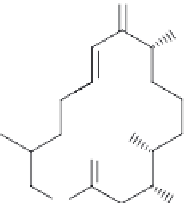Agriculture Reference
In-Depth Information
point is that residue levels do not pose unacceptable risks for consumers by being present
in values that exceed these levels.
Similar legislation exists within the European Union. Within the EU Directive
(91/414/EEC), the Plant Protection Products Directive (The Authorisations Directive: 1991)
was proposed with the aim of harmonizing the overall arrangements for authorization of
plant protection products within the EU. However, legislation relating to MRLs of pes-
ticides in cereals, fruits, vegetables, foods of animal origin, and feeding stuffs was sub-
stantially amended several times since this legislation was developed. A single act has
replaced the amended original Directive Regulation (EC) No. 396/2005. This establishes
maximum levels of pesticide residues permitted in or on food and feed of plant and an-
imal origin. These MRLs include levels that are specific to particular foodstuffs that are
intended for human or animal consumption, and a general limit that applies where no spe-
cific MRL has been established. Finally, as infants have underdeveloped immune systems,
fruit and vegetable-based baby foods need to be rigorously monitored, as the presence of
low concentrations of pesticides could invariably be fatal. The EU has set an MRL for
any given pesticide in infant foods of a concentration not exceeding 10
g/mL. This infor-
mation is very significant for the use and future applications of biosensor-based detection
methods.
μ
20.7 Appendix
This illustrates some of the compounds described in the text that are of relevance to the fruit
and vegetable industry.
H
H
H
3
C
H
CH
3
H
H
H
O
F
CH
H
H
CH
3
H
O
S
F
H
Cl
H
Fludioxonil
Atrazine
2-(4-Thiazolyl)benzimidazole
O
CH
3
O
H
3
C
H
3
C
CH
3
H
3
C
H
3
C
HO
O
O
HO
O
O
O
OH
O
CH
3
OCH
3
CH
3
OCH
3
OH
O
O
OH
CH
3
CH
3
Tylosin















Search WWH ::

Custom Search